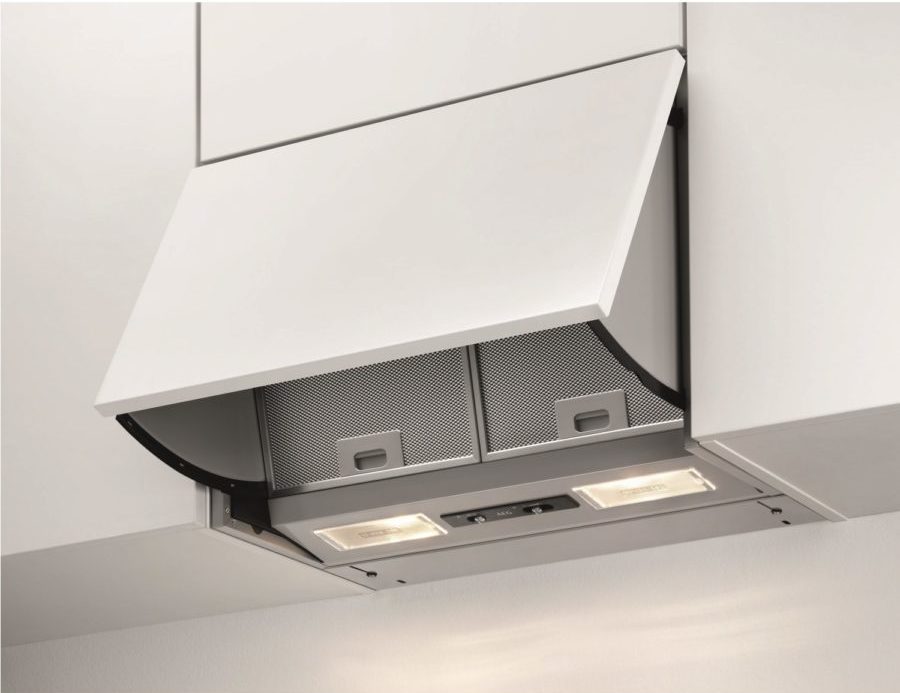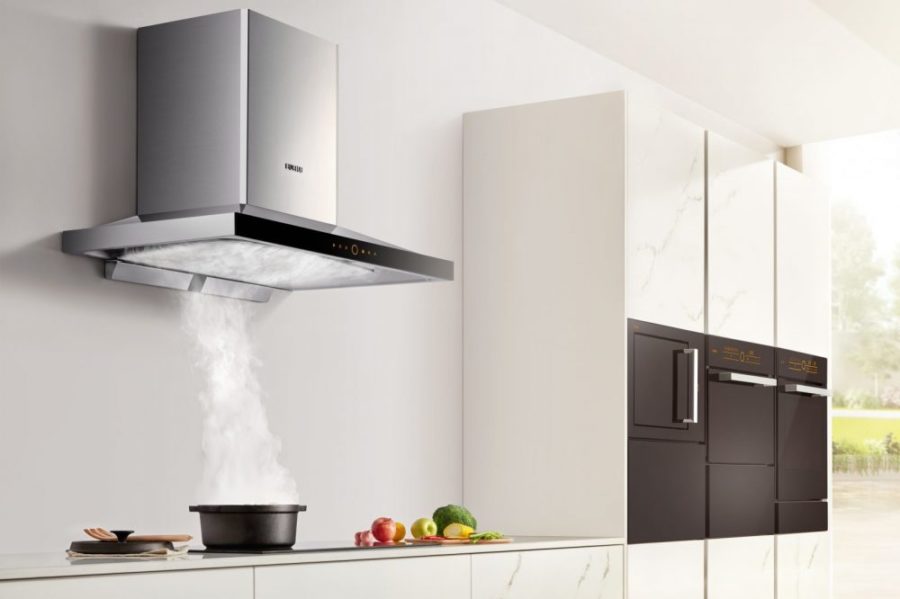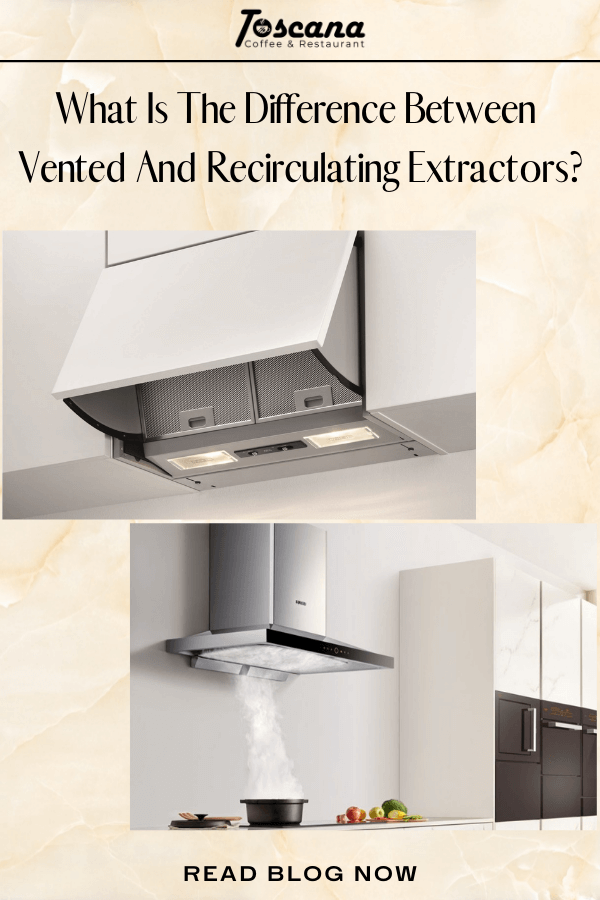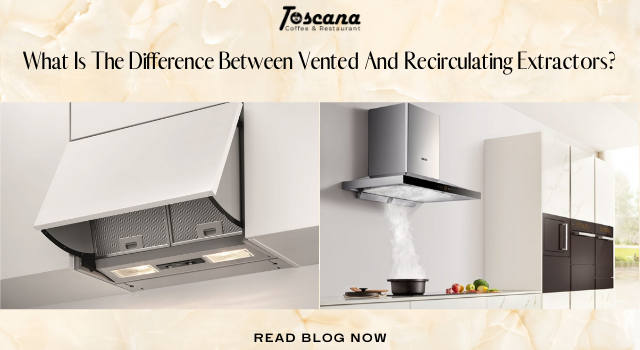What Is The Difference Between Vented And Recirculating Extractors?
A cooker hood is necessary for your kitchen because it removes odors, smoke, grease, and contaminants produced by your cooking process and refreshes the kitchen. This useful kitchen accessory keeps the air clean and healthy, which creates a better environment for your kitchen and your house.
When installing a cooker hood, you have to choose an extractor that handles the air, the stream, and the grease getting stuck in your cooker hood. Most extractors available are designed for either venting out or recirculating, both of which are the direction the air can go after going into the cooker hood.
Depending on the structure of your kitchen and your preference, you can choose between vented extractors and recirculating extractors.
Vented Extractor
Function
The cooker hood with a vented extractor would come with a duct or a pipe that allows air to be transmitted outside.

Vented extractor carries out vented extraction which is the process of getting all the polluted air from your cooking process out of your house. This extractor removes all the polluted air produced by your cooking process from your house immediately.
Advantages
- The vented extractor has a high airflow rate and can do its job effectively even with a low power setting.
- It can remove all the air and moisture from the cooking process from the kitchen fast, which allows the kitchen air to be clean and fresh immediately.
- It produces a low noise level while running.
Disadvantages
- The vented extractor does not apply to all kitchens. It only works effectively if your kitchen wall connects to the outside.
- The duct of this system usually requires drilling a small hole in your wall. Hence, the cooker hood with a vented extractor takes more time and effort to install.
- The extractor can also remove the heat from your kitchen when it is sucking all the air out.
Recirculating Extractor

Function
The cooker hood with a recirculating extractor usually comes with a carbon or charcoal filter that absorbs all the dirt and grease as the air enters the cooker hood, leaving the recirculated air cleaner.
Like what its name indicates, recirculating extractors recirculate your kitchen air. Yet, you need not worry about getting all the pollutants in your kitchen back with this recirculation.
Advantages
- Since this system has no additional duct or pipe transmitting the air, it is much easier to install compared to the vented extraction system.
- No heat gets removed from the kitchen, for the air gets recirculated.
Disadvantages
- The filter reduces the airflow rate.
- The filtering process does not guarantee completely clean air (the recirculated air is also affected by the cleanliness of your filter).
- The carbon filter needs to be replaced regularly, which causes more inconvenience and more cost.
- It produces a higher noise level when working.
- Moisture is not extracted from the kitchen.
Here is a short video about the difference so that you can visualize it better:
FAQs
Which one is better, vented extractor or recirculating extractor?
Vented extractor carries out vented extraction wins in this case. It can remove all the grease, smells, and smoke in your kitchen without returning this air to the room, which guarantees better air quality.
However, as mentioned above, it is not always possible to install a vented extractor, especially if you are living in an apartment that does not have a kitchen wall connecting to the outside. If your kitchen wall connects to another room, the duct of the vented extracting system will bring the polluted air into that connecting room, which is by no means ideal. Since recirculating extractor can be used in any type of kitchen, it wins in terms of applicability.

Which one is cheaper, vented extractor or recirculating extractor?
Compared to the recirculating extractor, although a vented extractor is slightly more expensive, it is more cost-effective in the long run, for there is no need to replace the carbon and charcoal filters in the kitchen hood regularly.
Yet, it is relatively inexpensive to replace charcoal or the carbon filter. Hence, if the regular additional cost of replacing the cooker hood filter worries you, you can rest assured.
Should I get a carbon filter for my cooker hood?
For a vented extraction system, fortunately, you don’t need to equip the cooker hood with any additional tool because the polluted air will flow through the duct to exit your kitchen and your house immediately. Hence, there is no need to filter the air within the machine.
However, for a recirculating extraction system, yes, you should get a carbon filter to help the cooker hood’s process of recirculating air if the cooker hood does not come with one. This carbon filter will help filter the contaminants and the grease in your air, so it is of great importance.
Thus, you should also change your carbon filter regularly to maintain the best air quality for your kitchen and your house. Dirt and grease can be accumulated over time in this filter, so replace the filter every one to three months depending on how frequently you cook.
Read More:
Do You Need A Screen For Gas Fireplace? 4 Reasons & Purposes
Conclusion (What Is The Difference Between Vented And Recirculating Extractors)
If you have made it this far, you have had everything you need to know about the difference between vented and recirculating extractors. Vented extractors and recirculating extractors have different functions and are suitable extractors for different kitchens. Hence, always remember to check your kitchen carefully before choosing an extractor for your cooker hood.


